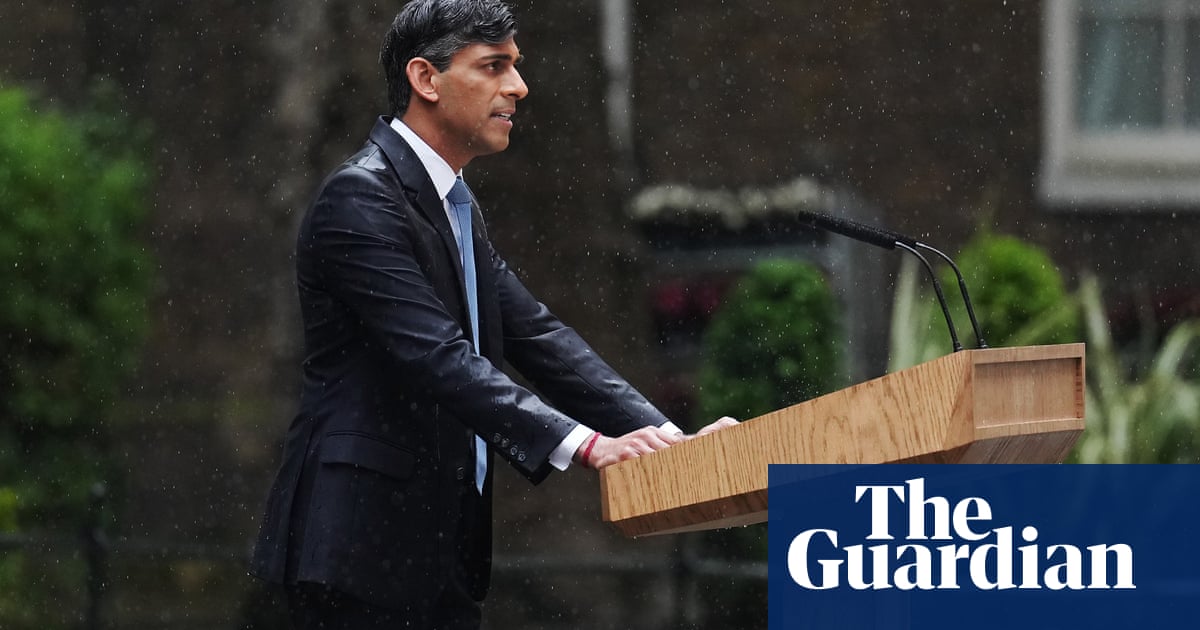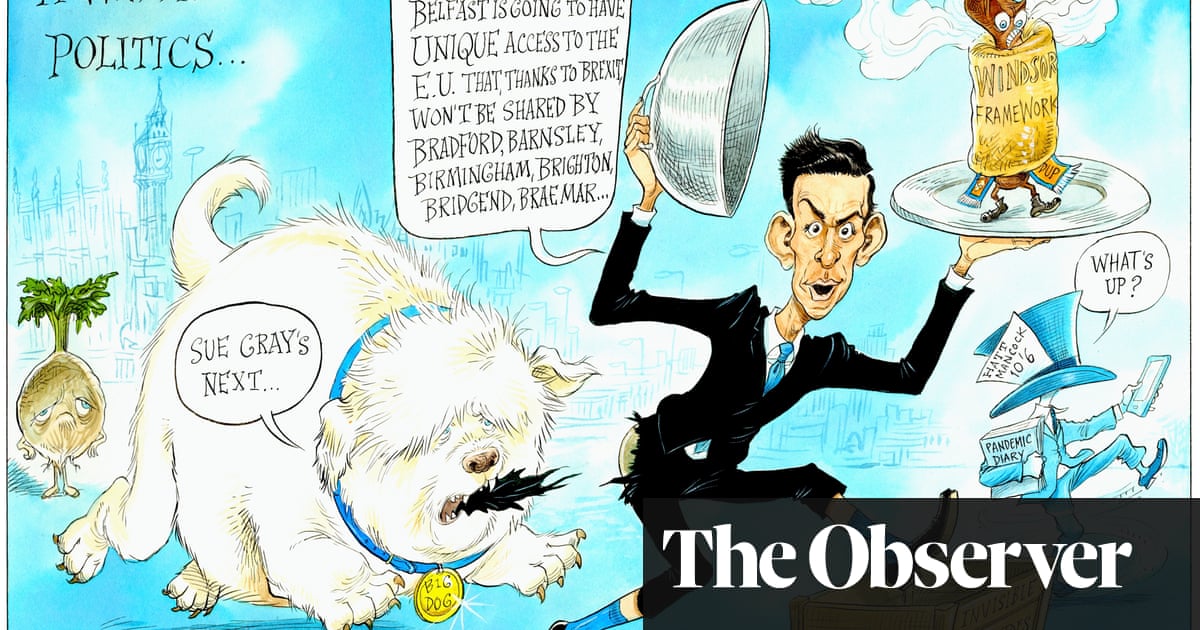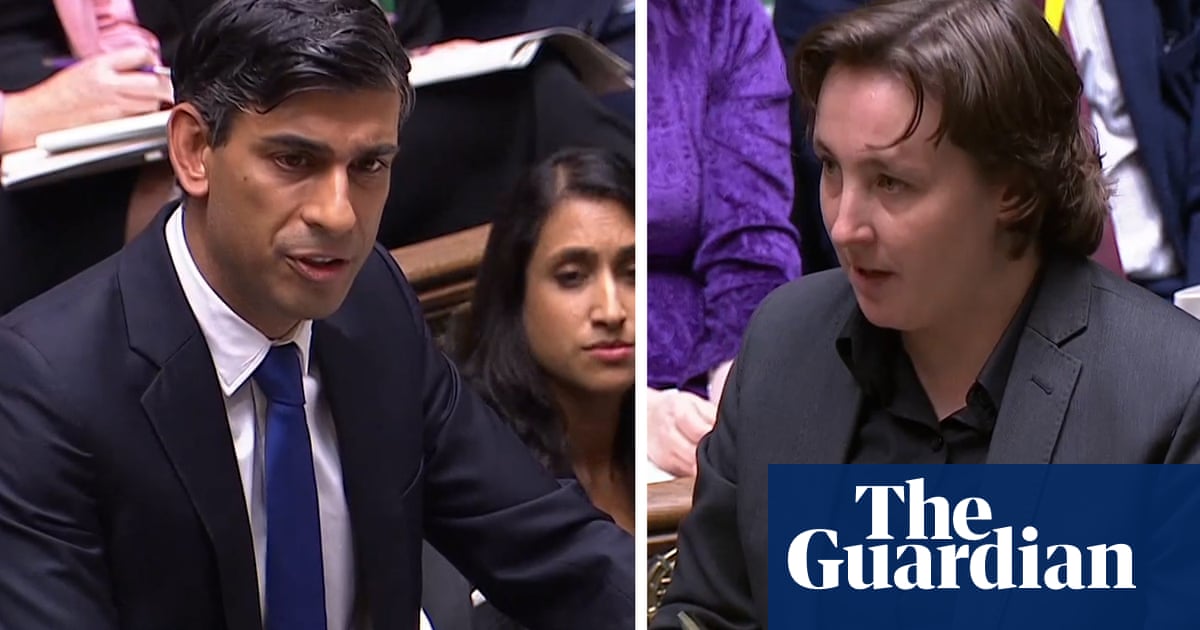
Rishi Sunak has taken an astonishing gamble in going for a general election at a time when there is still a little room to delay and the governing party is in such poor shape with public opinion.
The Guardian’s poll of polls shows Labour 21.8 points ahead of the Conservatives, with 44.7% of the vote to 22.9%. Poll leads of more than 20 points are usually only seen at exceptionally bad moments in the midterm.
A deficit about half this size in spring 1964 was enough for Alec Douglas-Home – who, like Sunak, had taken office most of the way through the parliament after Tory turmoil – to announce that there would be no election until autumn.
Governments in 1979, 1997 and 2010 were lagging in the polls, but they had no choice about timing – James Callaghan had lost a confidence vote in 1979, and the parliaments that had sustained John Major and Gordon Brown through bad times had reached the limit of their legal terms.
Election campaigns that started with the government well behind in the polls showed the gap narrowing in 1979 and 1997, although in 2010 the campaign was thrown into confusion by the prime ministerial debates and “Cleggmania”. But the narrowing was not enough: only in 1970 and February 1974 has a party ever won when it started the campaign – slightly – behind.
Labour’s poll lead now is a little narrower than it was at the equivalent stage of the contest in 1997. Support for both the main parties is down on 1997, with Reform UK (11.5%) and the Green party (6.5%) picking up. The swing since the December 2019 election is a mammoth 16.8 percentage points; the previous postwar record was the 1997 swing of 10 points.
Levels of support for each party may well change during the campaign, as people think about the issues and get the measure of the party leaders, all of whom are new since 2019.
The result in 2017 – a hung parliament – was very different from the comfortable Conservative majority forecast at the start of the campaign. It may be that the polls are inaccurate, as many of them were in 1997. While the campaign and poll error probably mean the Labour advantage on election night will be less than the polls are showing now, that is not necessarily so. Opposition leader images are particularly prone to change during election campaigns, and Keir Starmer has an opportunity to project himself to the electorate and improve his mediocre personal ratings.
The swing in the polling average is easily enough for Labour to win a large overall majority. A uniform swing would see Labour gain all its target list down to Kettering, target number 179 from the Conservatives. If Labour also gained seats from the SNP in line with Scottish polling, the majority would be virtually identical to Tony Blair’s 179-seat margin in 1997.
But there is evidence from polling and the local elections that the swing is not uniform, and that it is much lower in Labour-held seats and even higher in some constituencies that swung a lot in favour of the Conservatives between 2005 and 2019. If this turns out to be the case, and Labour maintains its massive lead, then the party’s majority will be the largest in any election since the 1931 National Government landslide. Even if Labour’s poll lead starts to slip, the distribution of swing should be enough to grant a bare overall majority with a vote lead as small as 6 percentage points.
The Liberal Democrats are scoring 9.8%, down two points on 2019. Despite this, they are likely to emerge much strengthened from the election. The main reason is arithmetic – with the Conservatives 22 points down, the net effect is a 10-point swing from Conservative to Lib Dem in the seats that are contested between the two. The Lib Dems will probably also benefit from tactical voting: people who would swing behind Labour in most constituencies supporting the Lib Dems in the constituencies where they are the main challengers to the Conservatives. This pattern has also been demonstrated in byelections and local elections during this parliament. The Lib Dems could realistically think in terms of increasing their representation to 30-40, and perhaps more in the event of a real Conservative meltdown.
Like Sunak now, Major played it long in 1997, to give Labour time to come apart under the pressure of a six-week campaign. While Major narrowed the gap a little, Labour maintained their discipline, as Thatcher’s Conservatives did in 1979. It would take a turnaround in public opinion that is absolutely unprecedented in British history for Sunak’s Conservatives to still be in government on 6 July.












